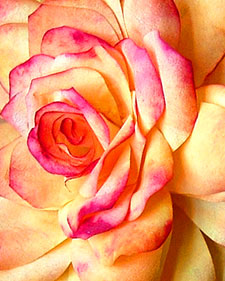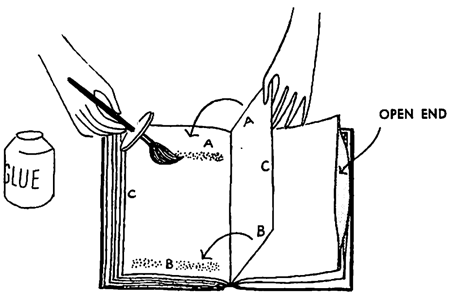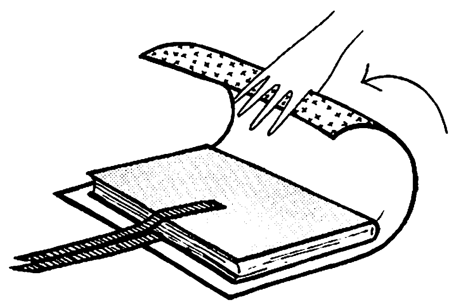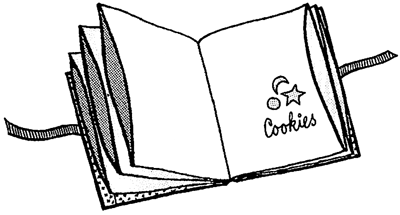Tools and Materials:
1.Box of disposable cone coffee filter.
2.Scissors . 3.16-gauge floral wire.
4.Floral tape.
5.Water color paint.
6.Flat brush.
7.Bamboo skewer.
8.Glue stick.
Coffee Filter Roses How to do it:
1. Trace and cut petal shapes through both layers of filters, as per templates.
2. Form rose. With coffee filter No. 1, take four connected petals and poke an 18-inch length of 16-gauge floral wire down through the center of the bottom of one end petal so 1/2 inch of the wire remains sandwiched between two opposite petals.
3. Wrap adjacent two petals tightly around first two petals; wrap with floral tape around base, then 1/2 inch down wire, to secure.
4. When working with floral tape, pull it as you work to expose the sticky part of the tape.
5. With coffee filter No. 2, take four connected petals and sandwich "flower bud" between two opposite petals. On the adjacent petal pair, gently tear the perforation of the base so that you have a strip of 2 side-by-side petals. Wrap this petal strip around the other two petals and secure with tape.
6. With coffee filter No. 3, take four connected petals and gently tear the perforation at the base to create a strip of four petals. Wrap this petal strip around flower bud and secure with tape.
7. With coffee filter No. 4, gently tear the perforation at the base of petal shapes to create a strip of five petals. Wrap this petal strip around flower bud and secure with tape. (The folded petal gives rose stability and a more rounded form.)
8. With coffee filter No. 5, place three petals, overlapping slightly on rose and wrap just once (to avoid bulk) with floral tape to secure.
9. Wrap remaining three petals opposite the first three. Repeat for shapes cut from filters Nos. 6, 7, and 8. Use finger and thumb to separate petals, creating air pockets and making petals curve outward from the base. Use 3 or 4 extra single petals to fill in holes and give a rounded shape.
10. To paint the roses, use watercolor paints, mixed with a bit of water. Paint the base color, first doing the bottom, then the top, working from the inside out. Accentuate with a darker color on the tips. Use a flat brush to apply a third color of undiluted watercolor to edges. Let dry overnight.
11. Once painted roses are dry, curl left and right sides of outer petals around a bamboo skewer to create a point. Work your way from the outside to the inside of rose. Curl inner petals just slightly by wrapping top straight down around bamboo skewer.
12. Add five paper sepals secured with floral tape to short stem. Wrap floral tape in a spiral down wire stem several times to create a thick roselike stem. Burnish stem with skewer to smooth tape. Cut 6 paper leaves and sandwich a 4-inch wire between. Use a glue stick to stick 6 leaves together with a 4-inch wire stem.
13. Secure leaves to stem with floral tap.









 To construct each building, use a ruler and marker to draw rooflines, window openings, and doors on an unassembled magazine box. For variety, you can set the peak of the roof off center 2 or 3 inches as we did for some of the buildings pictured above. Cut the cardboard (a parent's job) along the lines and remove the side flap. Then assemble the box. For a long, narrow building, assemble and mark a file storage box, as shown, and cut along the lines.
To construct each building, use a ruler and marker to draw rooflines, window openings, and doors on an unassembled magazine box. For variety, you can set the peak of the roof off center 2 or 3 inches as we did for some of the buildings pictured above. Cut the cardboard (a parent's job) along the lines and remove the side flap. Then assemble the box. For a long, narrow building, assemble and mark a file storage box, as shown, and cut along the lines. For the roof, cut out a piece of corrugated cardboard. To figure out the dimensions, first measure the length of the upper edge of the front wall and add a couple of inches for an overhang. Then measure the width of the side wall, again adding an inch or so. Fold the cardboard to create the roof peak and glue it in place atop the building. If needed, loosely apply strips of masking tape to hold the roof in place until the glue dries.
For the roof, cut out a piece of corrugated cardboard. To figure out the dimensions, first measure the length of the upper edge of the front wall and add a couple of inches for an overhang. Then measure the width of the side wall, again adding an inch or so. Fold the cardboard to create the roof peak and glue it in place atop the building. If needed, loosely apply strips of masking tape to hold the roof in place until the glue dries. Now you can paint the roofs, window trim, shutters, and doors and add any other details you desire. For example, you can glue on a cardboard steeple to create a church or fill a barn with packing-paper straw. For the finishing touches, cut out a village green from poster board or construction paper to arrange the buildings around and add paper stepping-stone paths. For a fence, cut out a bunch of small corrugated cardboard pickets and string them together with dental floss or twine.
Now you can paint the roofs, window trim, shutters, and doors and add any other details you desire. For example, you can glue on a cardboard steeple to create a church or fill a barn with packing-paper straw. For the finishing touches, cut out a village green from poster board or construction paper to arrange the buildings around and add paper stepping-stone paths. For a fence, cut out a bunch of small corrugated cardboard pickets and string them together with dental floss or twine.
